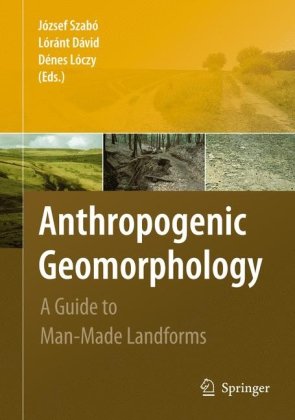

Most ebook files are in PDF format, so you can easily read them using various software such as Foxit Reader or directly on the Google Chrome browser.
Some ebook files are released by publishers in other formats such as .awz, .mobi, .epub, .fb2, etc. You may need to install specific software to read these formats on mobile/PC, such as Calibre.
Please read the tutorial at this link: https://ebookbell.com/faq
We offer FREE conversion to the popular formats you request; however, this may take some time. Therefore, right after payment, please email us, and we will try to provide the service as quickly as possible.
For some exceptional file formats or broken links (if any), please refrain from opening any disputes. Instead, email us first, and we will try to assist within a maximum of 6 hours.
EbookBell Team

4.4
32 reviewsToday, human impact on the environment, and especially on the Earth’s surface, is obvious. We increasingly face the consequences of our interventions, and we must pay more attention to the wider impacts of our activities, which include everything from the extraction of fossil fuels to the influence of tourism. Anthropogenic geomorphology, as the study of the way man affects his physical environment, has therefore developed rapidly as a discipline in recent decades.
This volume provides guidance to students discussing the basic topics of anthropogenic geomorphology. The chapters cover both its system, and its connections with other sciences, as well as the way the subject can contribute to coping with practical problems. The book represents all fields of geomorphology, giving an introduction to the diversity of the discipline through examples taken from a range of contexts and periods, and focusing on examples from Europe.
It is no accident that anthropogenic geomorphology has been gaining ground within geomorphology itself. Its results advance not only the theoretical development of the science but can be applied directly to social and economic issues. Worldwide, anthropogenic geomorphology is an integral and expanding part of the Earth sciences curricula in higher education, making this volume timely and relevant.
Key themes: Anthropogenic Geomorphology - Dynamic equilibrium – Environmentalism - Geomorphic processes - Human impact - Man-made landforms
József Szabó is Professor Emeritus at the Department of Physical Geography and Geoinformatics, University of Debrecen. He is President of the Hungarian Geographical Society, a Corresponding Member of the CERG (Strasbourg) and a Member of the International Landslide Research Group (Palo Alto, California). His research fields are mass movements and other geomorphological processes, land evaluation, anthropogenic geomorphology, geomorphological hazards, and history of physical geography.
Lóránt Dávid is a college professor an